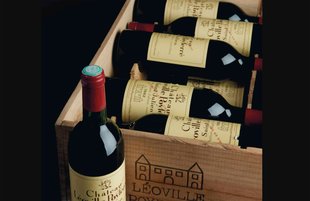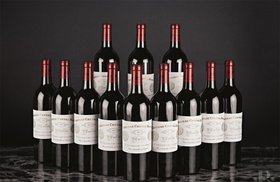Chateau Leoville Poyferre (Winemaking, Best Vintages, Prices 2025)
Keen on adding a bottle of Chateau Leoville Poyferre to your wine collection?
Chateau Leoville Poyferre is a Second Growth Grand Cru Classe estate and one of the oldest winemakers in the Saint Julien appellation. Its namesake red wine embodies the elegance of the finest Bordeaux reds. The 2009 vintage scored a perfect 100 from wine critic Robert Parker.
So how does Leoville Poyferre make such exquisite wines, and what’s the secret of its famous Grand Vin?
Let’s explore all about this Bordeaux Chateau - its history, the vineyard, vinification techniques, and the Top 10 Chateau Leoville Poyferre Wines you can buy this year.
We’ll also show you How You Can Invest in Leoville Poyferre and other fine wines.
Further reading
- Are you looking for ways to invest in the highly sought-after Krug or Moet Champage?
- Here's a Comprehensive Wine Investment Guide that simplifies the process for you.
A Quick Intro to Chateau Leoville Poyferre
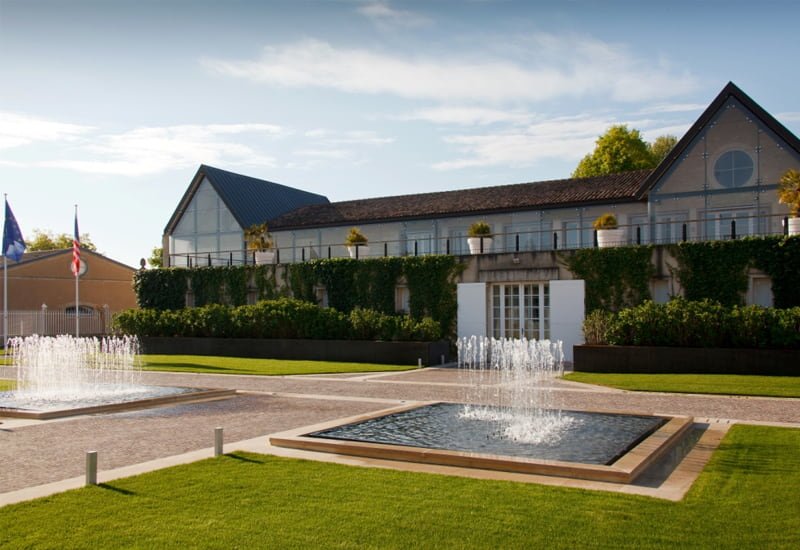
Chateau Leoville Poyferre is a prominent wine estate on the Left Bank of the Bordeaux region in France. Its signature reds were recognized as a superior DeuxièmesClasse (Second Growth) in the 1855 Bordeaux Wine Official Classification.
Besides its Grand Vin, Chateau Leoville Poyferre also produces a second wine called Pavillon de Leoville Poyferre.
Both of the Chateau’s wines have velvety tannins and are composed of these grape varieties:
- Cabernet Sauvignon
- Cabernet Franc
- Merlot
- Petit Verdot
The estate is currently owned by the Cuvelier family, which has a long history in the wine trading business in Bordeaux. They also own Chateau Le Crock (a First Cru Bourgeois Supérieur), Chateau Moulin Riche (a Cru Bourgeois Exceptionnel), and Chateau Camensac (in the Haut Medoc appellation).
Let’s take a look at the evolution of Chateau Leoville Poyferre over the years.
A Brief History Of Leoville Poyferre
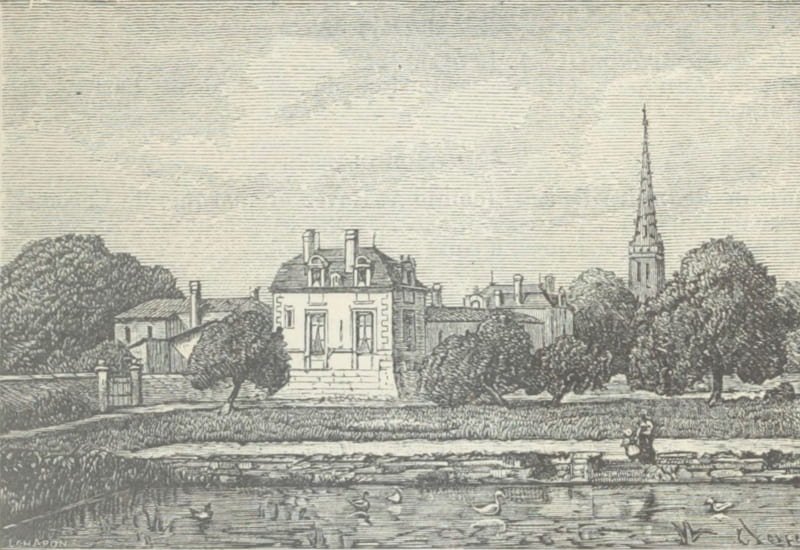
In 1638, the Chateau was one of the earliest wine-producing properties in the Medoc region, along with Chateau Margaux. Under the ownership of the Bordeaux parliamentarian, Jean de Moytié, the estate was called Mont-Moytié. After the Moytie and Gascq-Leoville marital alliance, the estate was rechristened Leoville.
By 1740, Leoville was one of the largest estates in the Saint Julien appellation.
During the French revolution, the property was divided into Chateau Léoville-Las Cases and Chateau Leoville Barton. When Jean de Las-Cases’ daughter married into the Poyferre family, her share of Chateau Leoville-Las Cases became Chateau Leoville Poyferre.
In 1920, the Bordeaux wine brokers Paul and Albert Cuvelier purchased Chateau Leoville Poyferre.
However, as the Cuvelier family never directly managed the estate, it never underwent any radical transformation. During this time, the Leoville Poyferre wines were not at par with those at other Leoville estates.
A revamp of the Chateau was ushered in by Didier Cuvelier, who took over the estate in 1979.
Under his able leadership, the 48-hectare vineyard of Leoville Poyferre almost doubled in size to 80 hectares. In 1994, Didier Cuvelier hired the famous oenologist Michel Rolland as a consultant.
Let’s discover more about the vineyards and viticulture at Chateau Leoville Poyferre.
Leoville Poyferre Vineyards and Viticulture

Leoville Poyferre’s 80-hectare vineyard lands are planted with four distinct grape varieties - Cabernet Sauvignon (68%), Merlot (24%), Cabernet Franc (6%), and Petit Verdot (2%).
In the 1960s, though, almost half of the vineyards were planted with the Merlot grape variety, 30% with the Cabernet Sauvignon varietal, and the rest with Cabernet Franc.
The terroir is composed mainly of gravelly soil with smaller amounts of sand, limestone, and clay.
The vine plantings have adapted to the region’s maritime climate. The vineyards sit on a plateau that reaches heights of about 20 meters and have a density of 8,500 vines per hectare. The average age of the vines is 38 years.
Vine-pruning is done by the double guyot method. Chateau Leoville Poyferre employs several other traditional techniques like desuckering, debudding, and deleafing to manage the vine canopy. The Chateau was also the first one to incorporate the use of pine stake trellis for their vines.
The vineyards at Chateau Leoville Poyferre are broadly categorized into five blocks with 43 parcels, each with a unique terroir and soil profile. Each of the Chateau’s wine blends, including its red wine, Chateau Moulin Riche, and the second wine, Pavillon de Leoville Poyferre, are excellent expressions of the terroir.
Now let’s explore the vinification process at the Chateau.
Winemaking at Chateau Leoville Poyferre
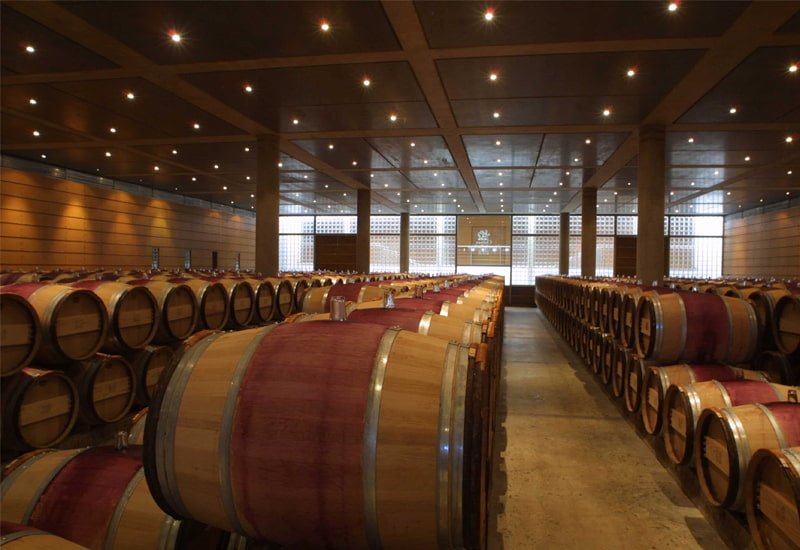
Chateau Leoville Poyferre pioneered several innovative viticulture and winemaking techniques. The process includes:
- Harvesting: Once at optimal ripeness, the grapes are harvested by hand and transported in crates to the vat house. There they are sorted twice and crushed just before fermentation.
- Fermentation: The Chateau has 57 temperature-controlled stainless steel tanks, of which 27 are double-walled. Cold maceration occurs in the double-walled tanks for almost a week.
At this stage, natural yeast is used instead of sulfur dioxide to enhance the red-gold color of the wine. The sugar conversion to alcohol is ensured through daily pump-overs.
The wine undergoes malolactic fermentation in French oak barrels.
- Aging: The fermented wine is aged in oak barrels for at least 18 months. The barrels are first rinsed with sulfur to prevent wine spoilage during aging (a technique first pioneered by Chateau Leoville Poyferre.)
The Chateau offers a range of wines suited for every palate. Let’s look at some of the best Leoville Poyferre wines you can buy this year.
Best Leoville Poyferre Vintages to Buy in 2024
Here’s a list of some of our favorite Leoville Poyferre wines:
1. Chateau Leoville Poyferre, 1964
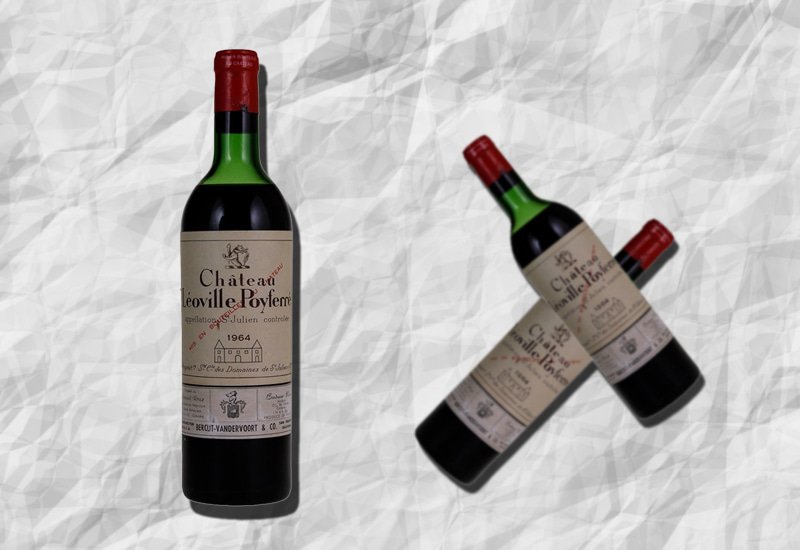
This wine has a unique nose of creme de cassis, pencil shavings, and licorice with ripe tannin mouthfeel and a palate of black fruit tasting notes. It is best served with classic meat dishes, veal, pork, beef, and lamb.
Price of Chateau Leoville Poyferre, 1964: $187
2. Chateau Leoville Poyferre, 1972

The 1972 vintage has low acidity and seamless freshness with a palate of black currant, toast, cinnamon, and red fruits tasting notes. It has supple tannin levels with a sweet nose of chocolate and cassis.
The perfect complements to this fine wine are Asian dishes, fish courses, mushrooms, cheese, and pasta.
Price of Chateau Leoville Poyferre, 1972: $137
3. Chateau Leoville Poyferre, 1984
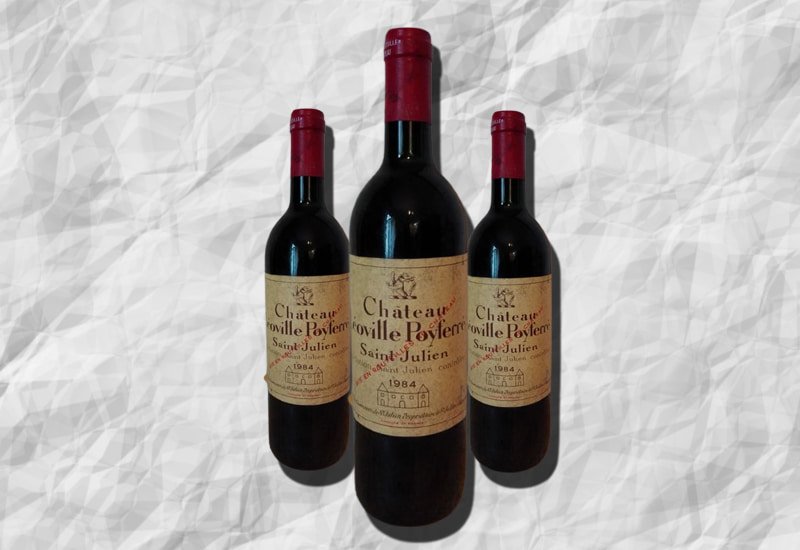
This great wine has a rusty red color with a nose of ripe fruit, red cherries, cassis, and tobacco. After resting for half an hour, it emanates seamless freshness and coffee, dark chocolate, and pencil shavings aromas.
The palate of this mature Bordeaux has a ripe tannin texture, low acidity, and red fruits aroma with hints of graphite.
Price of Chateau Leoville Poyferre, 1984: $138
4. Chateau Leoville Poyferre, 1989
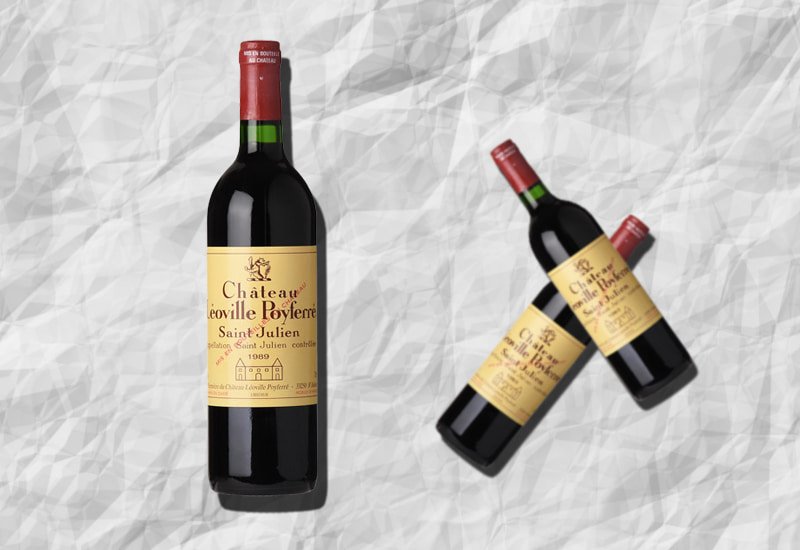
This hearty vintage has a nose with a bouquet of aromas like bramble, earth, cassis, cedarwood, and spice tasting notes like Sichuan pepper, saffron, and cinnamon. It is a great wine with firm tannins and balanced acidity.
Price of Chateau Leoville Poyferre, 1989: $190
5. Chateau Leoville Poyferre, 1995
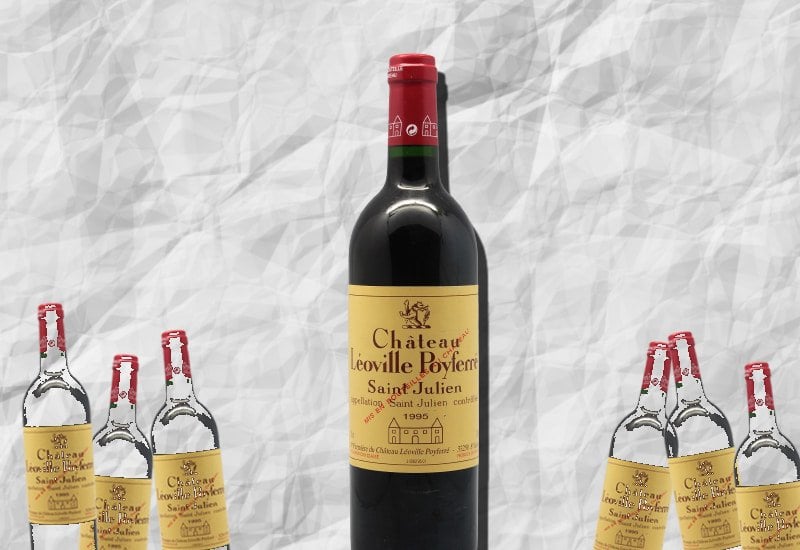
This Bordeaux blend is full-bodied with a nose of cassis, coffee, and blue fruit. It has high acidity, fine texture, and velvety tannins with a long finish.
Price of Chateau Leoville Poyferre, 1995: $152
6. Chateau Leoville Poyferre, 2000

This delicate blend of Chateau Leoville Poyferre has finesse and a nose of coffee, black fruit, and Sichuan pepper aromas. The velvety texture showcases a sweet tannin mouthfeel and a palate of ripe fruit, plum, and black cherry.
Price of Chateau Leoville Poyferre, 2000: $227
7. Chateau Leoville Poyferre, 2009
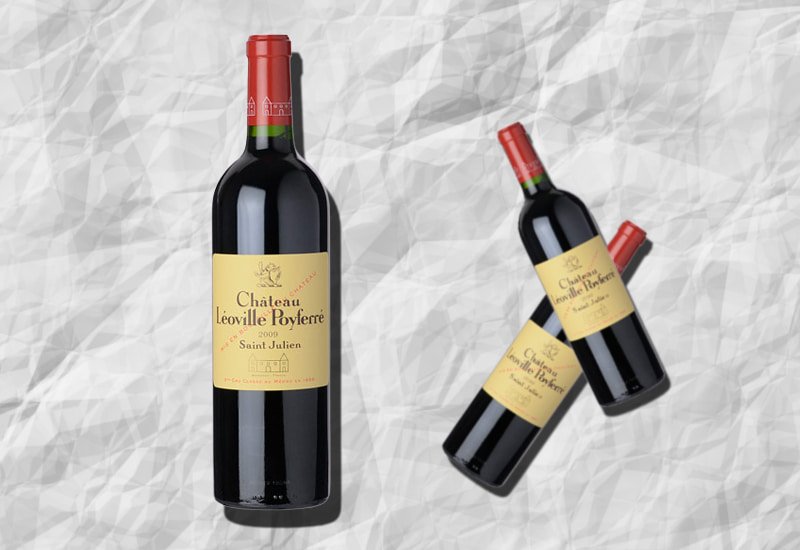
This top contender scored a perfect 100 from Robert Parker. Its dense purple color reveals a heady nose of creme de cassis, charcoal, blue fruit, and spring flowers. The silky tannins enrich its velvety texture and fruit flavor.
Price of Chateau Leoville Poyferre, 2009: $268
8. Chateau Leoville Poyferre, 2018
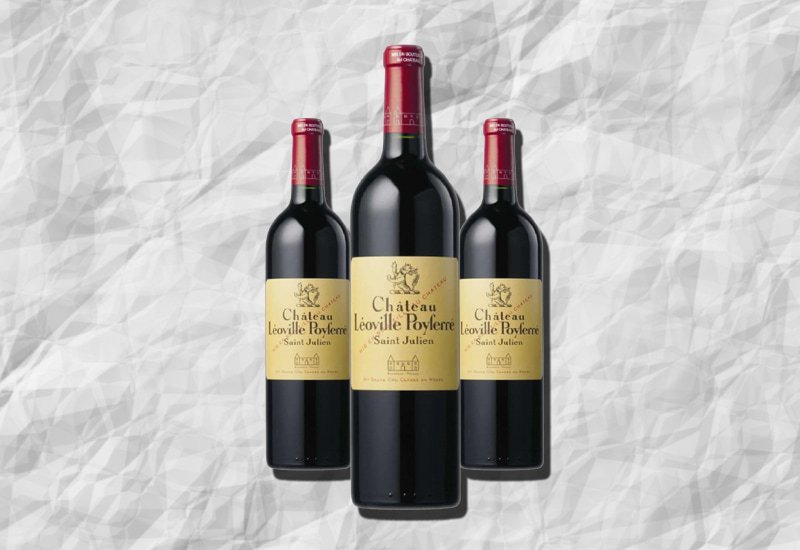
This blend from Chateau Leoville Poyferre has a deep purple color and a unique nose of licorice, smoke, and blackberry. It is a full-bodied wine with silky tannins and tasting notes of coffee bean, dark chocolate, black cherry, and tobacco.
It scored a perfect 100 from wine critic Jeb Dunnuck. This young vintage needs some time in the decanter to open up its flavor bouquet.
Price of Chateau Leoville Poyferre, 2018: $111
Now, is the fine Chateau Leoville Poyferre wine a good investment choice?
Let’s find out.
Investing in Chateau Leoville Poyferre
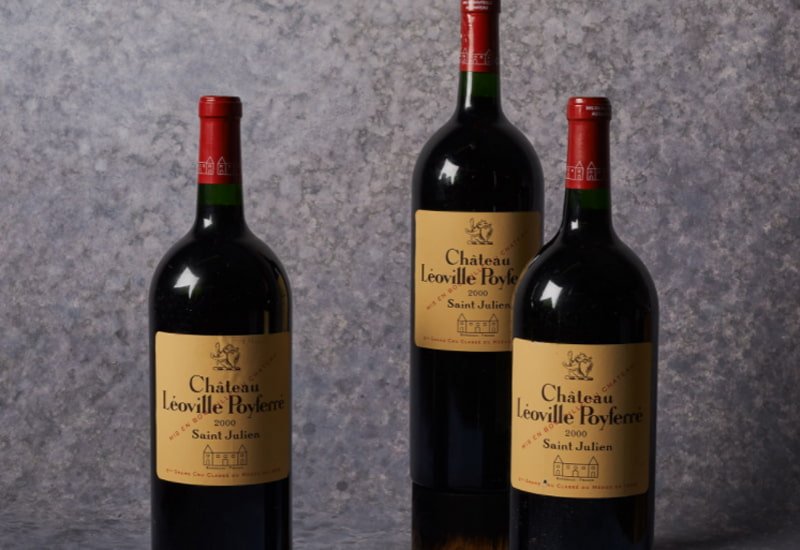
The inclusion of Chateau Leoville Poyferre as a Second Growth in the 1855 Bordeaux Classification elevated it among the likes of Chateau Ducru Beaucaillou. Under the hands of Didier Cuvelier and Michel Rolland, Chateau Leoville Poyferre has enjoyed increased popularity and has captured the attention of wine lovers worldwide.
The Chateau Leoville Poyferre Grand Vin is best enjoyed after aging for at least a decade or two. The ideal period to savor these wines is after about 15 to 35 years.
Chateau Leoville Poyferre is a good investment wine that has shown substantial appreciation in value over the years. For instance:
- Chateau Leoville Poyferre 1964 increased in price by about 57%, from $129 to $203 from 2019 to 2021.
- The 1972 Chateau Leoville Poyferre appreciated by more than 67% from $90 to $151 in just five months (from February 2020 to July 2020).
Here are some exciting auction results for Chateau Leoville Poyferre:
- At a Sotheby’s auction in March 2020, a 5-bottle case of the 1982 Chateau Leoville Poyferre sold for $1,342.
- A two-bottle case of 1961 Chateau Leoville Poyferre sold for $503 at the Chiswick auctions in June 2018.
- On Wine Auctioneer, a 3-bottle case of 1978 Chateau Leoville Poyferre sold for $462 in January 2021.
- At the Sotheby’s auction in December 2020, a 12-bottle collection of 1996 Chateau Leoville Poyferre sold for $1,625.
Now how do you go about taking advantage of this wine’s investment potential?Vinovest can help you build a portfolio of wines, including a Poyferre.
Buy Leoville Poyferre and Other Collectible Wines Through Vinovest

Vinovest is a wine investment company that assists you in building a profitable portfolio of premium wines that are known to outperform the market. On the other hand, if you wish to try the wine you buy through the platform, Vinovest will ensure hassle-free delivery to your doorstep.
How Does It Work?
- Sign up with your name, email address, and password.
- Reveal your investing style and risk appetite by answering a few basic questions.
- Add at least $1,000 or more to your account.
- Based on your answers to their questionnaire, Vinovest will provide you options for a customized portfolio.
You are now just a few steps away from starting your wine investment journey!
Benefits
It provides multiple benefits for wine lovers and investors:
1. Easy Buying and Selling Using AI-driven Technology
Vinovest has an Artificial Intelligence-driven platform that makes it very easy to purchase and sell fine wine from Medoc, Pauillac, and other prestigious wine regions from all around the world.
2. Best Prices
Vinovest purchases only authentic wines directly from trusted winemakers, wine exchanges, and wine merchants, without intermediaries. So all your favorite wines are available at the best possible prices.
3. Curated Portfolio by an Expert Wine Advisory Team
Not a wine expert? No problem! Vinovest has a team of expert sommeliers and data scientists who will guide you through the process of building your own high-performing portfolio.
Vinovest also updates you on upcoming wine auctions in which you can participate and make additional gains.
4. Authenticity and Provenance
Vinovest ensures that every wine bottle you buy is authentic and traces its provenance before you make your purchase.
5. Optimal Storage and Safety
Vinovest ensures that you have easy access to a wine cellar without struggling to maintain it yourself. They store your wines in bonded warehouses that provide optimal temperature, light, humidity, and vibration levels all the time.
6. Comprehensive Insurance and Security
With Vinovest, you get a full insurance policy at market value.
Their storage facilities have 24/7 security cameras that keep a close watch on your wine collection. Power backups at these facilities maintain ideal temperature conditions in the event of power cuts.
7. Low Overall Costs
Do such high-end services come with extra costs? Not really.
Vinovest charges a 2.5% annual fee, or 1.9% when the balance of your portfolio is over $50,000. This is inclusive of wine buying and selling, wine fraud alert, storage, insurance, and active management of your portfolio.
8. Tax Advantages
Vinovest does not charge you excise duty and VAT for its world-class facilities. So the substantial tax cut is passed on to you.
Leoville Poyferre: A Fine Bordeaux Wine for Your Collection
A bottle of Chateau Leoville Poyferre could be an excellent addition to your cellar. Savor the supple tannin and seductive flavors of this Bordeaux Grand Cru Classe at your next get-together, or get ready for potentially attractive gains by investing in it.
If fine wines like Chateau Leoville Poyferre interest you, don’t wait any longer. Get set for your wine investment journey and sign up with Vinovest today!
